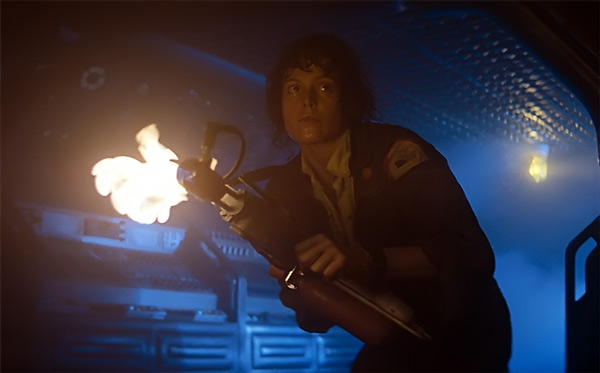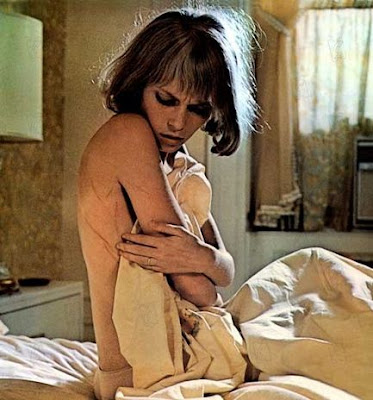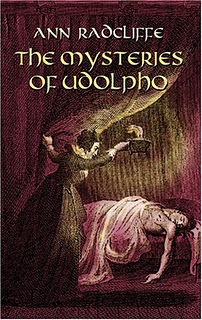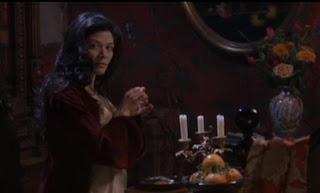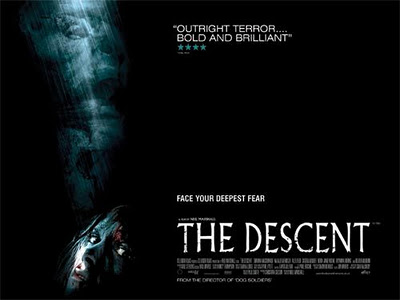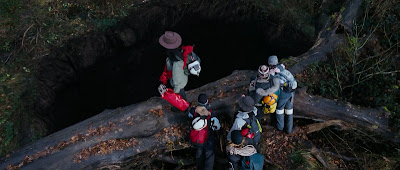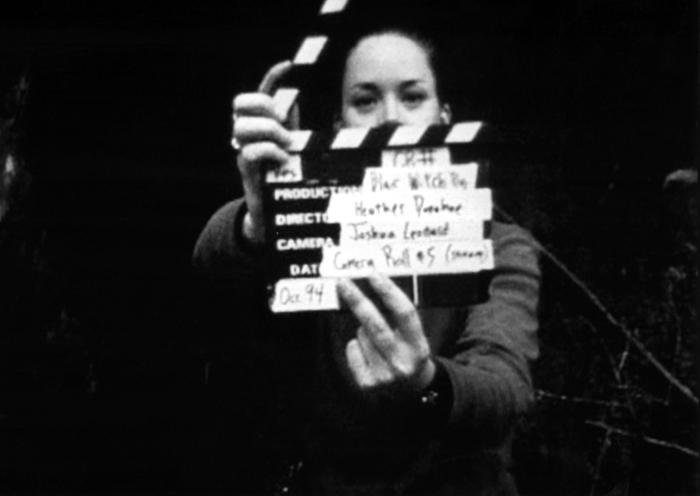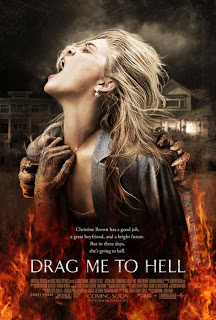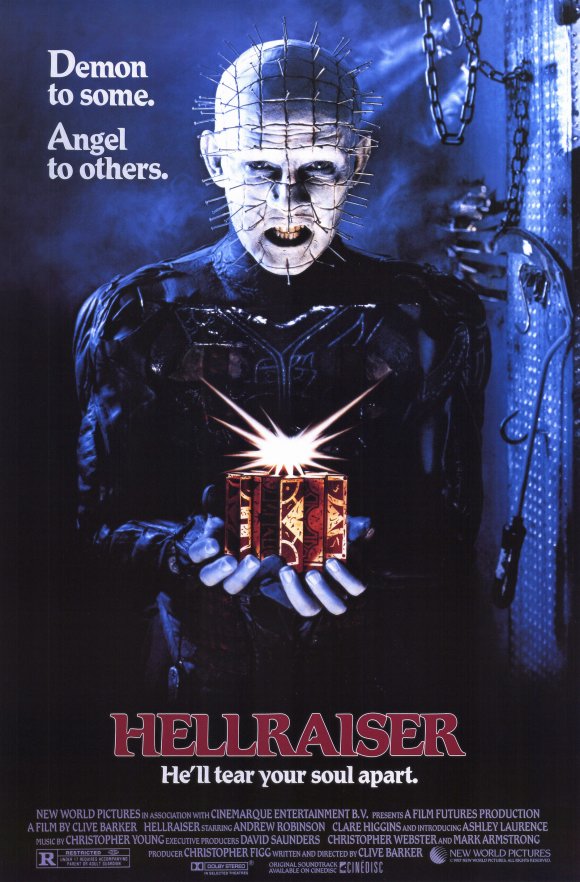If you missed last year’s Horror Week and want to keep reading feminist analysis of the genre, check out these great articles.
Sleepaway Camp by Carrie Nelson
The shock of Sleepaway Camp’s ending relies on the cissexist assumption that one’s biological sex and gender presentation must always match. A person with a mismatched sex and gender presentation is someone to be distrusted and feared. Though the audience has identified with Peter throughout the movie, we are meant to turn on him and fear him at the end, as he’s not only a murderer – he’s a deceiver as well. But, as Tera points out, the only deception is the one in the minds of cisgender viewers who assume that Peter’s sex and gender must align in a specific, proper way. Were this not the point that the filmmakers wanted to make, they would have revealed the twist slightly earlier in the film, allowing time for the viewer to digest the information and realize that Peter is still a human being.
Starling must unfortunately endure many such difficulties because she works in the male-dominated institution of the FBI. As an attractive woman, Starling receives lascivious looks from nearly every male in the movie. When she and her roommate go jogging in one scene, a group of men jogging the other way turn around to ogle the women’s behinds. Earlier, when Starling is looking for Agent Crawford’s (her boss) office, the men gaze at her as if she were an exotic delicacy. Hannibal Lecter’s psychiatrist Dr. Chilton tries to pick her up initially, “Are you familiar with the Baltimore area? I could show you around.” When she explains she has a job to do, Chilton becomes angry, “Crawford sent you here for your looks–as bait.” Lecter surmises that Crawford fantasizes about Starling and that is why she was selected for the assignment. Even the bespectacled etymologist asks her out. In fact, it is only Lecter who is more interested in getting in her head than her pants.
The Sexiness of Slaughter: The Sexualization of Women in Slasher Films by Cali Loria
The whores in horror are the signature flesh of the slasher flick. Women in this genre have long been given the cold shoulder: cold in as much as they are often lacking for clothing. Often a female character’s dearth of apparel becomes prominent at the pivotal point of slaughter: in cinema, women dress down to be killed. Filmmakers pair scopophilia with the gratuitous gore of killing–leaving viewers to male gaze their way into a media conundrum: When did sexual arousal and brutality towards women pair to become the penultimate money shot?
Amanda Young, Gender Erasure, and Saw‘s Unexpected Pro-Woman Attitude by Elizabeth Ray
There are many things that set Amanda apart from most villains in horror movies, the most notable one being that she’s a woman. But more than that, she’s a woman who is not driven by: jealousy, vanity, or obsession over a man. She doesn’t indulge in vampiric, Sapphic tendencies meant to titillate male viewers. And she isn’t sexualized: while reasonably attractive, she isn’t a young, nubile twentysomething, and she dresses in plain, normal clothes, which neither accentuate nor hide her feminine features. And she isn’t demonized either: she’s a not a “bitch” or “whore” who deserves what’s coming to her. Her mundanity is what makes her so appealing: she’s not just an “everygirl,” she’s an everyperson, who, like Jigsaw, is a character that all genders can identify with and sympathize — but her femininity isn’t taken away from her in order to make her stronger or more appealing (she is not given a boyish nickname like “Chris” or “Billy” and doesn’t adopt masculine traits like Ripley did in Alien), which is the most important thing.
Hellraiser by Tatiana Christian
Julia is an interesting character because unlike Kirsty – who experienced a mutual loving relationship between both her father and Steven (her love interest) – Julia had no such thing. Instead, Julia experienced rejection from Frank, her main obsession/love interest and killed off all the men who showed any interest in her (Larry and her victims).
Drag Me To Hell by Stephanie Rogers
I vacillated between these two women throughout the movie, hating one and loving the other. After all, Christine merely made a decision to advance her career, a decision that a man in her position wouldn’t have had to face (because he wouldn’t have been expected to prove his lack of “weakness”). If her male coworker had given the mortgage extension, I doubt it would’ve necessarily been seen as a weak move. And even though Christine made a convincing argument to her boss for why the bank could help the woman (demonstrating her business awareness in the process), her boss still desired to see Christine lay the smack-down on Grandma Ganush. I sympathized with her predicament on one hand, and on the other, I found her extremely unlikable and ultimately “weak” for denying the loan.
The Blair Witch Project by Alex DeBonis
But the film itself denigrates Heather because she accepts responsibility, almost agreeing with the taunts. The most famous scene in The Blair Witch Project is Heather’s tearful confession into the lens. The substance of this confession is that she is responsible for what’s happening to them, but it’s infuriating that Heather takes responsibility and does so at this point. The confession scene tries to make Heather an Ahab-like figure. On the one hand, her tendency to tape allows the narrative conceit of the film to operate. When events take a turn for the eerie and tense, Heather’s obsession with documenting the experience keeps the cameras rolling and allows us to see the ensuing tumult. On the other hand, it puts her energetic striving for a quality film on trial and coaxes from her a confession for a crime she doesn’t actually commit.
The Descent by Robin Hitchcock
While a cave setting evokes female reproductive organs almost inherently, the set design here takes this metaphor to extremes. The women descend into the cave through a slit-shaped gash in the earth, and then must crawl head-first through a narrow passageway into the greater cave system, where the true danger of the monsters await.
The monsters, depicted as the products of evolution motivated only by a primal drive for survival, are the perfect elaboration of this cave-as-womb horror metaphor. And as a cherry on top, they rip the guts out of these women.
In their landmark study, “Madwoman in the Attic,” Gilbert and Gubar embraced the figure of Bertha Mason (the insane, ghostlike previous wife of Jane Eyre’s hero, Mr. Rochester, whom he has locked up inside the attic…apparently for her own good and out of the goodness of his heart!) as somewhat of an alternate literary heroine, and started to analyze exactly what was at work in the common themes found in the literature that women were writing during that time period. As women attempted to write themselves into the purely patriarchal forms of literature that they had grown up reading, they faced the limits of the representation of women in heroic roles. So the gothic heroine emerged as somewhat of a compromise: a heroine who is perpetually endangered and perpetually courageous in the face of that danger. This is the precursor of the modern horror movie heroine who, against all logic, insists on checking out that pesky sound in the middle of the night or following the creepy voices outside of her room.
Let This Feminist Vampire In by Natalie Wilson
While the original film was also excellent, it lacked some of the more overt gendered analysis of the U.S. version. Though this may be due to discrepancies in translation (I saw the film both in Swedish with English subtitles and dubbed in English), the bullying theme running throughout the narrative was framed very differently in the Swedish version. In it, the young male protagonist, Oskar, was repeatedly told to “squeal like a pig” by his tormentors. In contrast, the male protagonist in the U.S. version, now named Owen (played by Kodi Smit-McPhee), is attacked by bullies with taunts such as “Hey, little girl” and “Are you a little girl?”
Inevitably the college kids pick up a hitchhiker, which is where the plot starts to get interesting. This hitchhiker, Baby Firefly (played by Zombie’s wife Sheri Moon), seems odd and off in her own world. She messes with the radio and giggles at the college kids. Both Denise and Mary instantly despise her and are obviously threatened by her sexuality, and as expected both Bill and Jerry like her. While this little battle starts to play out, and Baby is loudly drumming on the car’s dashboard, the car gets a flat tire. Of course the sexy female hitchhiker is a local and her brother can help fix the car. It is when Baby insists that the whole gang come over to dinner that this story finally becomes interesting.
A Feminist Reading of The Ring by Sobia
At the center of the mystery are Samara and her mother, Anna, both women whose sanity is questioned by the narrative. At first glance, the movie seems to be Anna’s creation, and it’s her face that we see in the images on the tape. Anna is implied to have been driven to the brink of insanity and eventually to suicide by Samara, who somehow creates images that burn themselves into the minds of those around her. Samara herself is an ambivalent figure that the movie does not seem to be sure about, which leaves her open to interpretation. While I was convinced of her pure evilness initially, subsequent viewings have made her emerge as a less sinister figure, especially given her portrayal in the Japanese version of the story.
Ellen Ripley, A Feminist Film Icon, Battles Horrifying Aliens…And Patriarchy by Megan Kearns
While both Alien and Aliens straddle the sci-fi/horror divide, one of the horror elements apparent in Alien is Carol Clover’s notion of the “final girl.” In numerous horror films (Nightmare on Elm Street, Halloween, The Descent), the resourceful female remains the sole survivor, the audience intended to identify and sympathize with her. Oftentimes sexual overtones exist with the promiscuous victims and the virginal survivor. While Alien and Aliens display sexual themes (we’ll get to those in a moment), Ripley isn’t sexualized but remains the sole survivor in the first film. She’s also never masculinized as Clover suggests happens to final girls in order to survive.
Rosemary’s Baby: Marriage Can Be Terrifying by Stephanie Brown
Rosemary’s Baby is one scary movie. It’s about a woman’s lot in a hostile world. It is about a terrible marriage to a narcissistic and selfish person. It is about the fear of motherhood and giving birth. It is convincing as a terrifying movie about the supernatural, and as a life lesson about selling your soul to a metaphorical devil. I like horror to convince me that I have learned something about the dark side of human nature…not just play with gore, or supernatural themes, or catastrophic nightmares. It has to name a fear that we really have, or a truth we find hard to believe, and the best horror enlightens us by showing us the darkness that haunts our lives.
Thanks to all our Horror Week 2011 and Horror Week 2012 writers!
